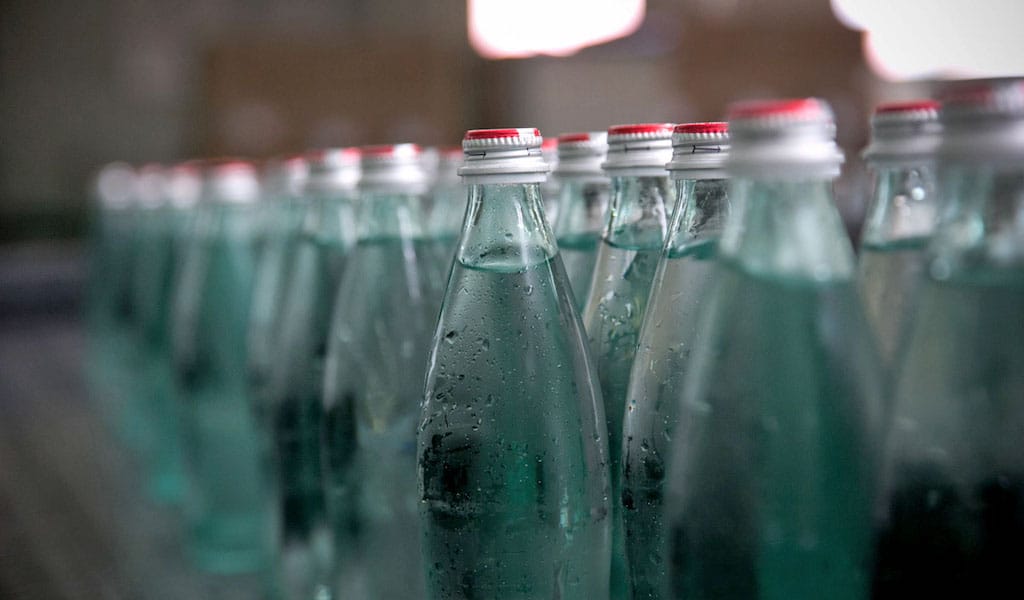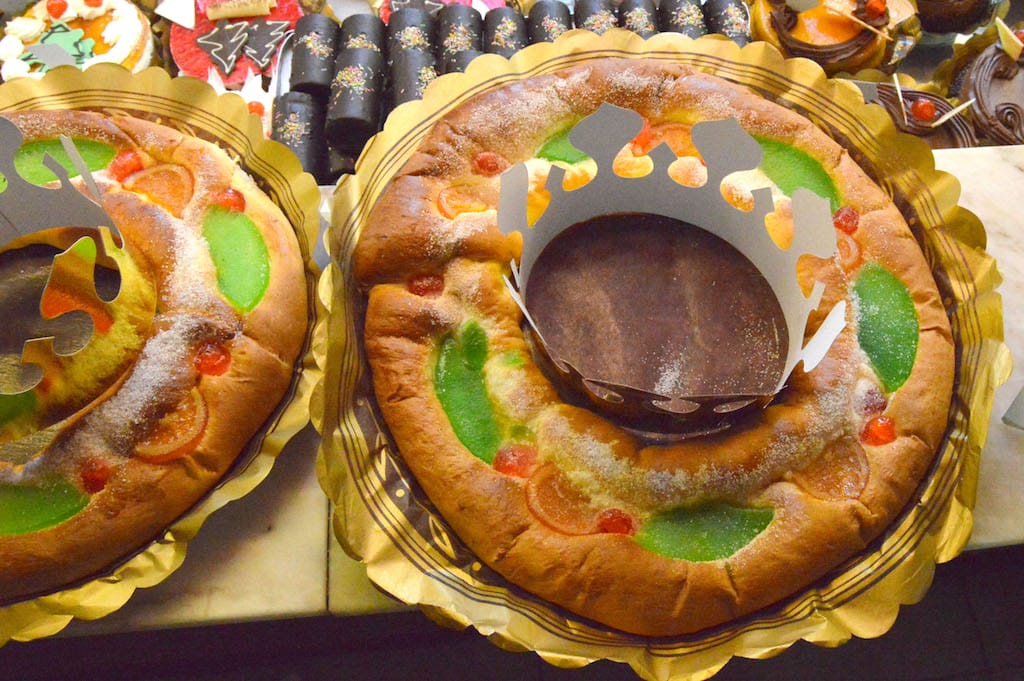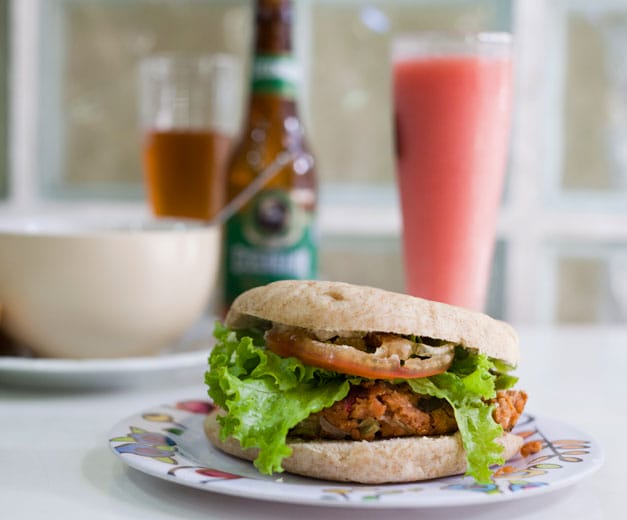It was a scorcher of a summer day in 2002, and we were pushing our broken Russian motorcycle and sidecar through crowded Plekhanov streets with a gnarly case of cotton mouth. Dripping in sweat, we limped up to the kiosk by our building and slipped some coins to the lovely Irma for a lifesaving cold bottle of Borjomi mineral water. She reached into her little fridge and passed a bottle to our trembling hands. We twisted it open, took a deep three-gulp pull and grabbed our neck in a panic, alcoholic vapors steaming from every pore of our body. Gasping, we handed the bottle back to her.
“This is not Borjomi,” we wheezed. She sniffed it and jumped back.
“Oh sorry. That is my husband’s spiritus,” she explained, replacing it deep into the fridge with a real bottle after checking it first.
The Borjomi surprise is a kind of Georgian baptism ritual that happens to everyone at least once, but rarely more than twice. Back in the pre-Rose Revolution days, however, the surprise wasn’t always an honest 150 proof mistake. Sometimes we were sold a salty carbonated broth mixed in a bathtub and passed off as the original because it was easy to do. Bottles were recycled and the authorities couldn’t be bothered to crack down on counterfeiters since the officials and crooks were typically one and the same.
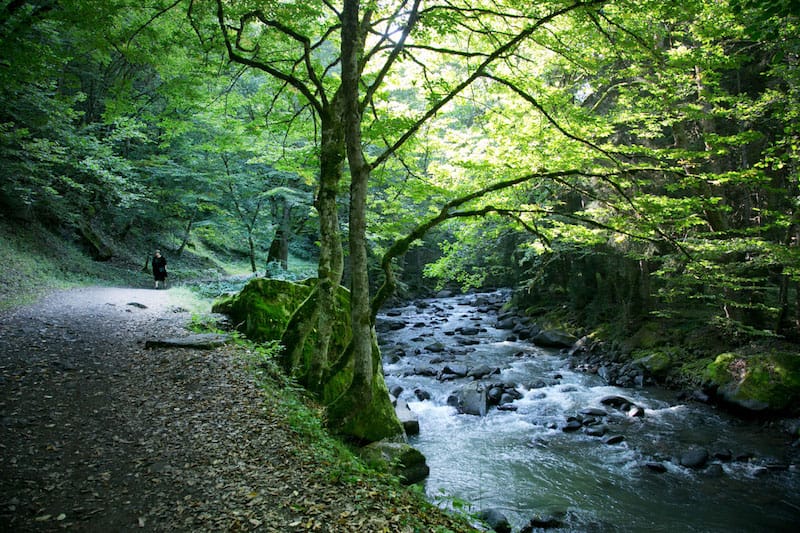
Yet despite the prevalence of bogus Borjomi, the lightly sulfuric, carbonated water never shed its renowned reputation for being a most precious elixir capable of curing everything from hangovers to unhappy marriages.
Archeological evidence reveals the water was exploited for its healing qualities over a thousand years ago from its source on the banks of the cascading Borjomula River, deep in the Lesser Caucasus Range. Over the centuries, however, the springs gradually became forgotten until one day, in 1829, Russian soldiers from the Czar’s army stationed in Borjomi rediscovered them and liked what they found. Yevgeni Golovin, the Czar’s viceroy to the Caucasus, brought his sick daughter Ekaterina to the springs in 1841, and her quick recovery prompted him to name the spring after her. Soon the royal family and their associates began to visit the mountain community for healing treatments and holidays. In 1871, Czar Nicholas I gave the Borjomi town to his son Grand Duke Mikhail who oversaw its development with a railroad, hotels, parks and the first Borjomi bottling plant, which opened in 1896 and operated until the 1950s, when the plant moved across town to accommodate growing sales.
The water never shed its renowned reputation for being a most precious elixir capable of curing everything from hangovers to unhappy marriages.
The Soviets arrived and turned the royal residences into sanatoriums for the new elite – Communist apparatchiks. While Borjomi thrived, providing esoteric mineral water health treatments for obesity, gastronomic disorders and diabetes, its bottled water was becoming a major Soviet cultural icon. They say when Yuri Gagarin dropped down to earth after his 1961 foray into outer space, the first thing he asked for was a bottle of Borjomi. In 1972, Russian film director Andrei Tarkovsky featured bottles of Borjomi mineral water in his science-fiction classic “Solaris” to emphasize that the beverage would exist far into the future, as it has. By 1980, the annual production of Borjomi was some 400 million bottles.
The city fell on hard times after the fall of the USSR. Most all the sanatoria closed, some becoming decrepit residences for hundreds of internally displaced persons (IDPs) from Georgia’s separatist wars in the 1990s. For years it was a crumbling destination for internal tourists who remembered its better days, while some lucky locals at least had jobs at the Borjomi bottling plant, which continued to produce on antiquated equipment. In 2002, IDS Borjomi International, a majority-Kazakh-owned company, bought the Georgian Glass & Mineral Water Co. and renovated the brand with design measures to prevent counterfeiting, carefully monitored the conditions and levels of the three main wells, and modernized the factory.
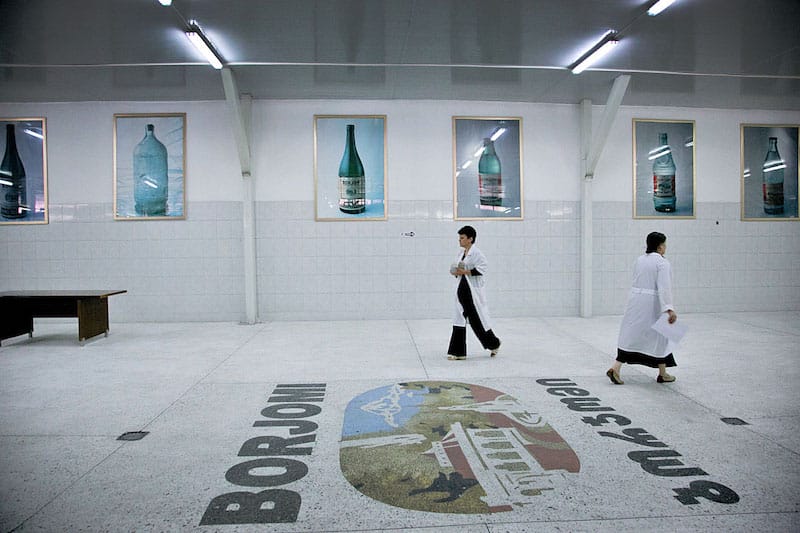
The Russian wine and water embargo in 2006 did less damage than presumed, as it compelled the company to diversify its market to 40 countries. The plant continues to be the main employer of the city of 14,000 people, having around 400 on the payroll. Others rely on tourism, which has returned, although the demand for gastric cleansing with Borjomi water is not what it used to be. Nevertheless, you can still get a range of Borjomi lavages at the five-star Hotel Borjomi Likani or a “special recipe” Borjomi mud bath at The Borjomi Palace Hotel. Most tourists, however, are the budget variety from north of the border with less sophisticated tastes.
Renewal has been slow to Borjomi, and many gorgeous structures are waiting for renovations, including the original bottling building – located inside the entrance to Borjomi Central Park, it’s now a semi-museum with about a dozen blown-up old photos. Many lovely buildings have been restored only to be plastered in collages of “for rent” signs and phone numbers. The Central Park is the city’s main attraction, a hodgepodge of 19th-century history and tacky carnival attractions along the enchanting Borjomula River. You can hike a few kilometers upstream to warm hot baths (27 degrees Celsius), while down by the entrance, you can fill up your own bottles of Borjomi at Ekaterina’s Spring. The only surprise you will find is its lack of added carbon dioxide. This Borjomi is the real deal.
Editor’s note: Our Liquid Assets series offers an occasional look at key beverages – alcoholic and non – that help define the culinary cultures that CB covers.
 June 10, 2019 Kök Kardeşler
June 10, 2019 Kök Kardeşler
Update: Unfortunately, this spot is no longer open.
In search of new adventures, we […] Posted in Istanbul January 6, 2015 Tortell de Reis
January 6, 2015 Tortell de Reis
Editor’s note: This is the second of our two-part series on kings’ cake. The first, on […] Posted in Barcelona December 9, 2013 Ask CB
December 9, 2013 Ask CB
Dear Culinary Backstreets,
My husband and I are headed to Rio for vacation and neither […] Posted in Rio
Published on August 19, 2020
Related stories
June 10, 2019
Istanbul | By Lorenza Mussini
IstanbulUpdate: Unfortunately, this spot is no longer open. In search of new adventures, we recently decided to venture to Beykoz, on the northern end of Istanbul’s Anatolian side, near where the Bosphorus meets the Black Sea. Getting there required an hour-long ferry ride – basically a mini Bosphorus cruise – from Üsküdar, and upon arrival…
January 6, 2015
BarcelonaEditor’s note: This is the second of our two-part series on kings’ cake. The first, on the version found in Mexico City, appeared yesterday. Today is Día de Reyes (Kings’ Day), also known as Epiphany, and in Catalonia, as in many places with Catholic traditions, we celebrate the Magi’s visit to the baby Jesus with…
December 9, 2013
RioDear Culinary Backstreets, My husband and I are headed to Rio for vacation and neither of us eats meat or fish. Brazil sounds like a paradise for the carnivorous, but what’s a vegetarian to do? Fat-rimmed picanha cuts roasting at churrascarias. Skewers of fat shrimp sold by hawking vendors on the beach. Assorted pork parts…







































